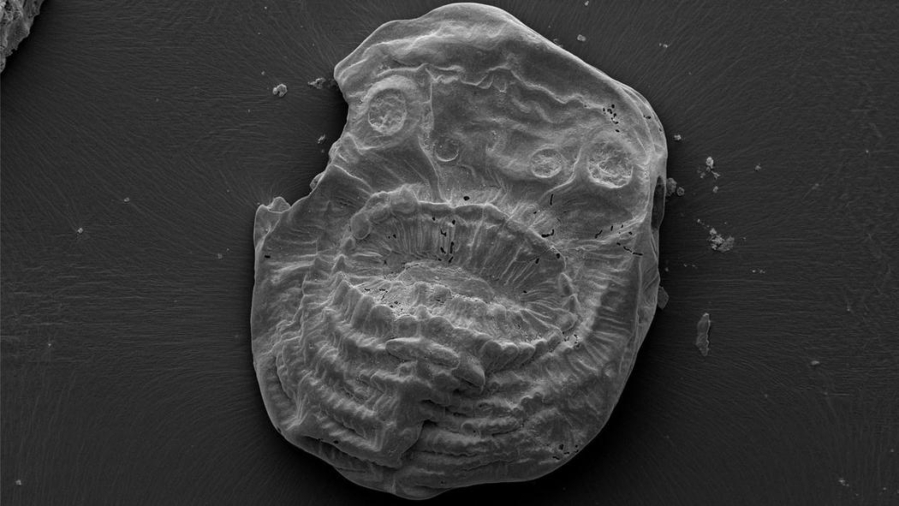A tiny wrinkled sack with a big mouth and no anus may well be the earliest-known of humans’ forebears. Meet Saccorhytus coronarius, a 540-million-year-old critter the size of a grain of sand, whose fossil remains were discovered in China.
Scientists say Saccorhytus is the most primitive of the known deuterostomes, a group of organisms whose living descendants include a vast array of animals from humans to starfish. The find, described in the journal Nature, sheds light on the rise of vertebrates — and on the reason that certain evolutionary links in their line of descent seem to be missing from the fossil record.
When scientists want to study the ancient evolution of humans, they have to study the emergence of vertebrates — a group that includes all animals with backbones, from fish and birds to reptiles and mammals.
So researchers look to study the oldest deuterostomes — a giant branch on the tree of life whose descendants include vertebrates as well as echinoderms and a few other groups.
Scientists have discovered ancient deuterostomes from around 510 million to 520 million years ago, but those fossils are too recent. These specimens typically show signs of already diversifying into vertebrates, tunicates, echinoderms and other lineages. To find something that looked more like a common ancestor, they’d have to find much older remains.
By using the average mutation rates of biomolecules and using that to calculate when related species diverged from one another, researchers have developed a pretty good estimate of when those parent deuterostomes gave rise to different lineages. The problem is, scientists haven’t been able to find any such organisms at the predicted point in the fossil timeline — which meant that the ancestor of all these groups had remained a mystery.
Part of the problem may have been that those missing ancestors were too small to be readily preserved, the authors wrote.
“The discrepancy between the known fossil record of early metazoans and their estimated times of divergence as based on molecular clocks suggests that such miniaturized forms could slip through the nets of most fossilization pathways and so help to explain this cryptic history,” the study authors wrote.
The new Saccorhytus fossils, at long last, help to fill in that gap. Measuring just 1.3 millimeters long, 0.8 of a millimeter wide and 0.9 of a millimeter high, Saccorhytus probably lived between grains of sand on the bed of shallow seas. Such sand would be compressed into sedimentary rock, allowing some of those grain-sized critters to become fossils.
This deuterostome had a giant mouth that stretched about 0.3 to 0.5 of a millimeter wide; scientists think it probably ate large food particles or even other tiny animals. Because it was covered with a thin, somewhat flexible skin, scientists think it had some kind of musculature and got around by wriggling its round little body.
Saccorhytus doesn’t seem to have an anus –which means that any waste products might have come back out through the mouth. But there are also eight cone-line openings, four on either side of its body, which may have allowed all the water that it “swallowed” while eating with its giant mouth to pass through. These cone openings may have been the precursor of gills, the breathing apparatus eventually used by fish and other marine and aquatic animals.
Alien as it may sound, this creature shares at least one key characteristic with its vertebrate and echinoderm descendants: bodies that feature bilateral symmetry.



